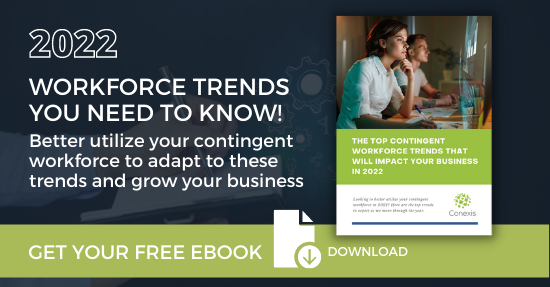Are you looking to adapt your organization’s staffing strategy to ensure future business growth? If so, you have probably heard about the benefits of building an agile workforce.
But what exactly is an agile workforce? In essence, an agile workforce is part of a blended workforce strategy, in which organizations combine employees and contingent workers to meet their strategic and tactical workforce requirements.
In fact, according to the The State of Contingent Workforce Management 2020 study from Ardent Partners, agile talent is the future of work and will drive successful businesses in 2020 and far beyond.
The study found that the vast majority (68 percent) of businesses expect their total future workforce to be truly “agile” in nature - made up of both traditional employees and non-permanent workers who contribute equally to the success of the company.
So, with workforce agility now an essential aspect of most company’s staffing requirements, what exactly is an agile workforce, how can your business build one and how do you ensure that you are managing it correctly?
Firstly, let's quickly look at the difference between an employee and a contingent worker
To fully understand what it takes to build an agile workforce, it’s crucial that your business first understands the difference between an employee and a contingent worker.
A contingent worker, also known as a non-traditional worker or non-employee worker, is an independent contractor, temporary worker (temp), freelancer, staffing agency worker, or remote worker that is typically sourced through a staffing agency. These temporary workers receive an hourly wage for their service, but are not actually employed by your organization.
A permanent employee, on the other hand, is a staff member who works with your company on a permanent employee contract. This means they are eligible for employee benefits such as paid vacations, sick days, bonuses and many other perks.
What is an agile workforce?
Businesses that succeed in the future of work will rely heavily on the agile workforce. With an increasing number of workers operating from home and businesses making the shift towards project-based work, employers are having to rethink their staffing strategies.
Today’s employers must be flexible. That’s why many businesses are focusing on workforce agility in a bid to prepare their organization for rapid industry changes and fluctuating business demand.
An agile workforce is simple in its definition. It is a workforce strategy that makes use of both permanent employees and non-employee (contingent) workers to improve the flexibility, scalability and agility of your business.
Building an agile workforce will ensure your company has the capabilities to scale up or down depending on current demand, beat the skills gaps by accessing talented workers at good rates as-and-when they are needed, and make better staffing decisions depending on your organization’s current workforce requirements.
What are the benefits of an agile workforce?
By building an agile workforce that blends both employees and non-permanent workers, your business will be able to realize a range of benefits that drive new business growth and help boost profits and performance.
Here are just a few of the main benefits your organization can expect to see after the creation of an agile workforce:
- Agile resources give your business the increased flexibility to quickly adapt to new business demands and new projects.
- The ability to beat skills shortages in your industry by engaging on-demand talent.
- Hiring on-demand workers as-and-when they are needed will help your business save money and make more informed hiring decisions.
- On-demand workers give your company the ability to scale its workforce up and down as required.
How to successfully manage an agile workforce
By definition, an agile workforce is simple. In practice, however, the management of an agile workforce is complex.
Non-permanent workers, and the staffing agencies you use to source them, create thousands of data points for your business. Without the use of an automated and centralized system to manage that data and consolidate your vendors, it’s virtually impossible to gain complete visibility and control over your non-employee workforce - which will result in overspending and poor hiring decisions.
The use of a vendor management system (VMS) will automate your entire non-employee workforce in one centralized location.
By consolidating the management of your entire non-employee workforce through the implementation of a VMS, your business will be able to make future hiring and vendor decisions based on fact, not opinion.
Want to learn more about vendor management systems and how they can help your organization manage an agile workforce? Contact Conexis VMS today. Our innovative VMS has been designed to help companies of any size better manage their contingent workforce.



